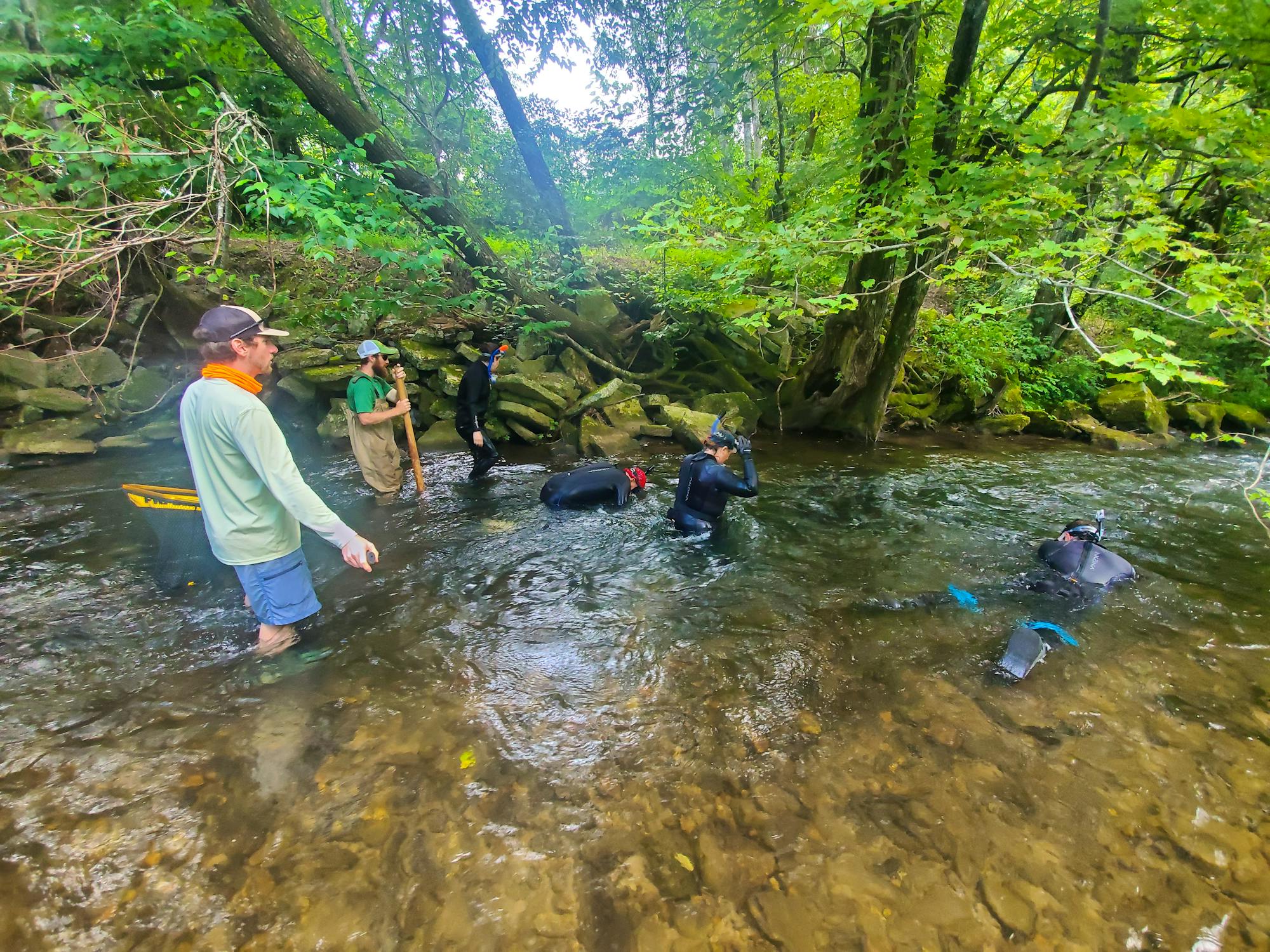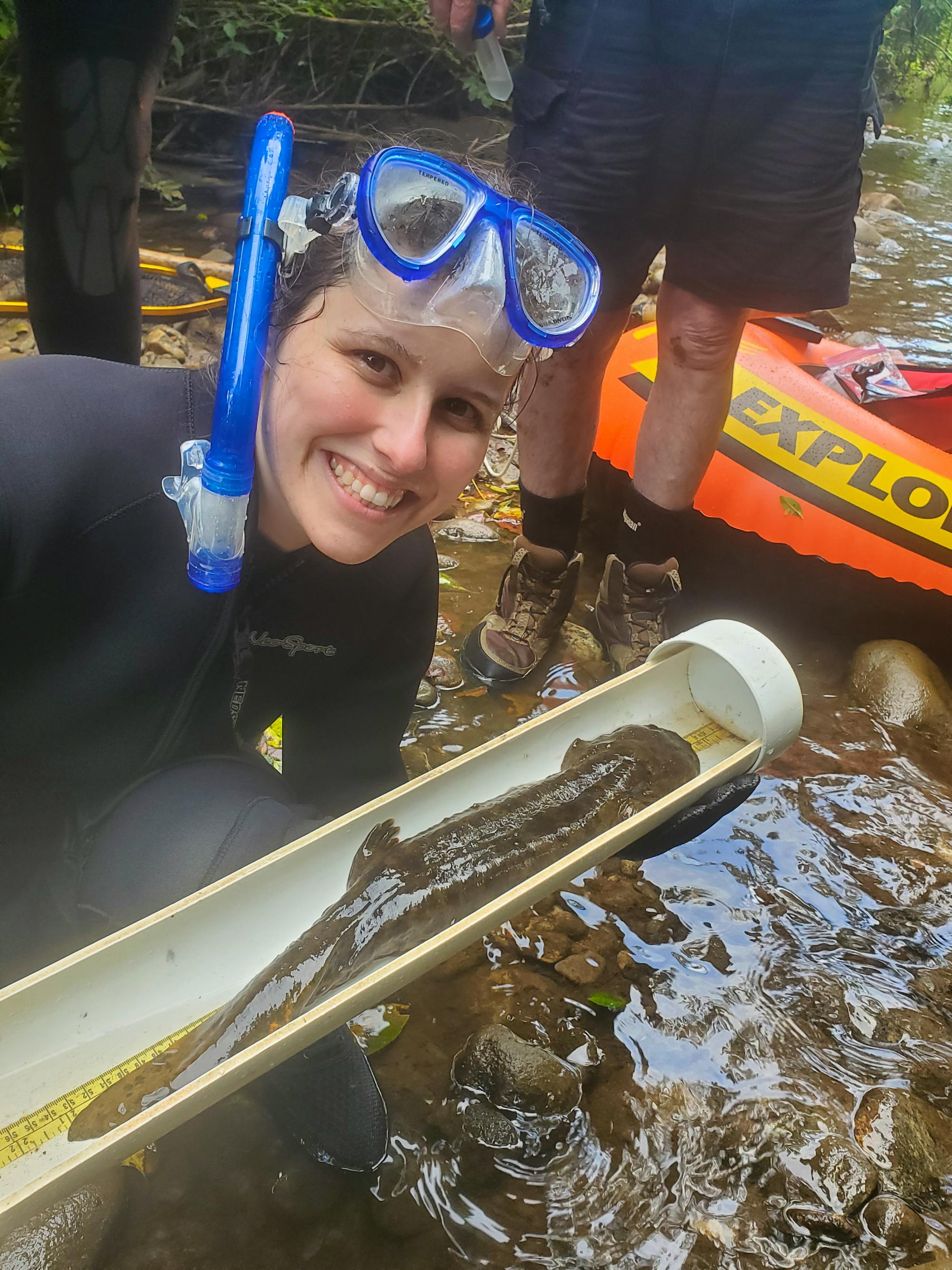On July 31st, farmers, biologists and employees of the Department of Agriculture’s Natural Resources Conservation Service (NRCS) all met in Mills River, NC to search for the beloved hellbender salamander. This isn’t a typical crew for a hellbender survey, but this isn’t a typical survey either. Through the Southeastern Hellbender Conservation Initiative (SEHCI), of which Defenders of Wildlife, the Conservation Management Institute at Virginia Tech, and the NRCS are key partners, we’re working to protect hellbender populations by producing win-win solutions for farmers and aquatic wildlife.
The NRCS is a federal agency that makes funding available for farmers and ranchers that adopt sustainable and environmentally sensitive management practices. SEHCI has been working with the NRCS in TN, VA, and NC to direct some of that funding specifically toward practices that benefit hellbenders, such as planting riparian buffers and fencing cattle out of streams. Because of this partnership, we wanted to let the local NRCS employees who are more familiar with cows and crops than aquatic salamanders get their feet wet and see what this project is really about.
This stretch of the North Mills River in Henderson County, NC is only about a mile and a half from Pisgah National Forest and North River Farms, where we’ve gathered, is one of the first farms along the river after it exits the National Forest. Jason Davis, the owner of the farm, has been working with the NRCS to make his farm more sustainable for years though practices such as grassed waterways and cover crops. Now he is excited to see how he can help improve habitat and even more excited to finally see a hellbender in person – if we can find one. Hellbenders are notoriously elusive, extremely picky about their habitat, and disappearing at an increasing rate from places where they were historically abundant. All these factors have the survey team on pins and needles with anticipation to see if we would be lucky enough to find a hellbender.



With some in snorkel masks and others in waders, we all jumped into the river and started making our way upstream one huge rock at a time. After only about 10 minutes in the river, we heard the muffled yell, “Ellbenner! Ellbenner!”, through one of the surveyor’s snorkels and everyone sprang into action. Those with snorkel masks joined up and were carefully scouring the river bottom until finally they spotted it again. Surrounding the hellbender, one of the snorkelers gently coerced the salamander into their hands and brought it up out of the water. This wasn’t a behemoth hellbender by any stretch of the imagination, but it was something even more promising – a juvenile.




Finding and recording juveniles in a population of hellbenders means that at least some level of recruitment, or reproduction, is happening - very good news! Since this was the first hellbender that we found at the site, we let the NRCS folks get a good look at this iconic species of the Appalachian Mountains first. Sometimes it’s hard to explain how charismatic hellbenders can be and these photographs probably don’t do them justice, but once a hellbender is in hand, you really feel an immediate connection to the species and can’t help but want to protect them. Those from the NRCS got a chance to look a hellbender in the eye and get a first-hand feel for what we’re working for through SEHCI.
As the day went on, we continued upstream and ended up finding a total of seven hellbenders in about 2,500 linear feet of the North Mills River. We found more juveniles and adults including one female hellbender that measured a whopping 22 inches! Fortunately, while we were taking measurements and weights of this hellbender, Mr. Davis made his way to the river to see how the survey was going! Needless to say, he was excited to know that hellbenders are calling his farm home.
This day of hellbender surveying was about more than gathering data; it was a chance to really connect the conservation of the land and the survival of this iconic species with the folks from NRCS and the farmer. By involving these partners, we were able to share information about the perils hellbenders are facing and, more importantly, demonstrate the ways in which we can all work together to come to solutions that benefit this species.










